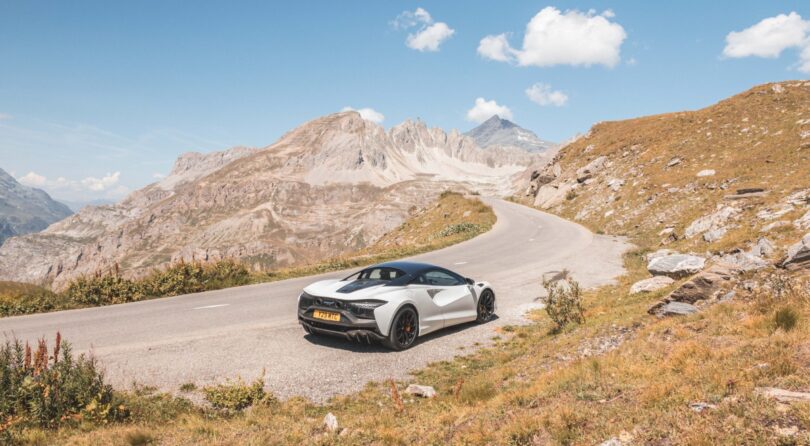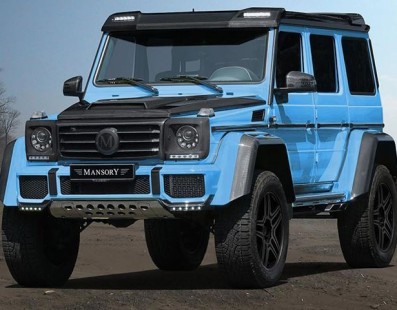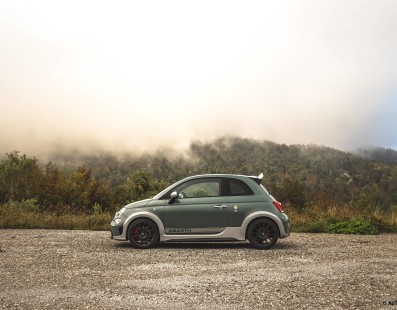It is like a silent sniper you do not see until it’s too late. It’s a fatal blow that comes from who knows how far away, but hits exactly where it’s needed. The Artura, with a name that sounds like that of the third degree aunt you meet just twice a year, is exactly this: a lethal weapon with maximum effectiveness.
Words Alessandro Marrone / Photos Bruno Serra
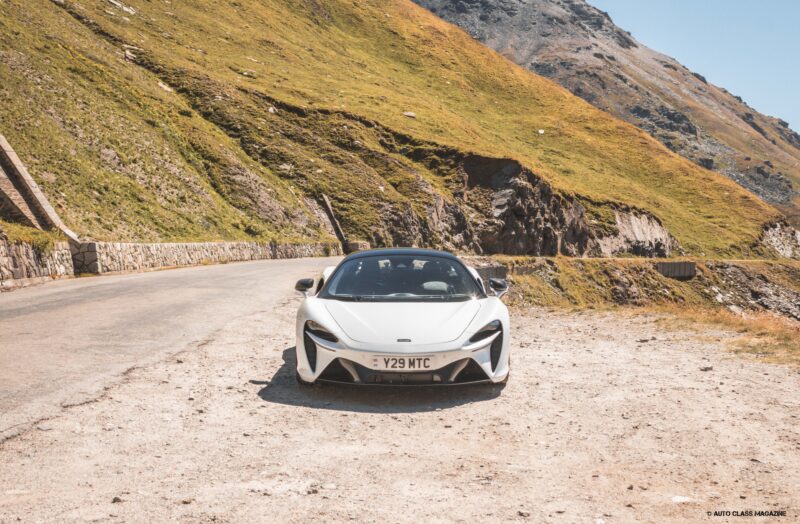
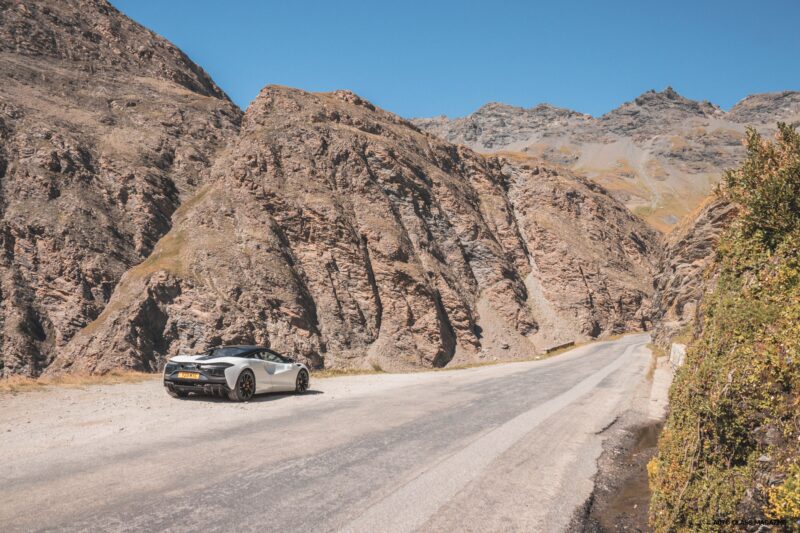
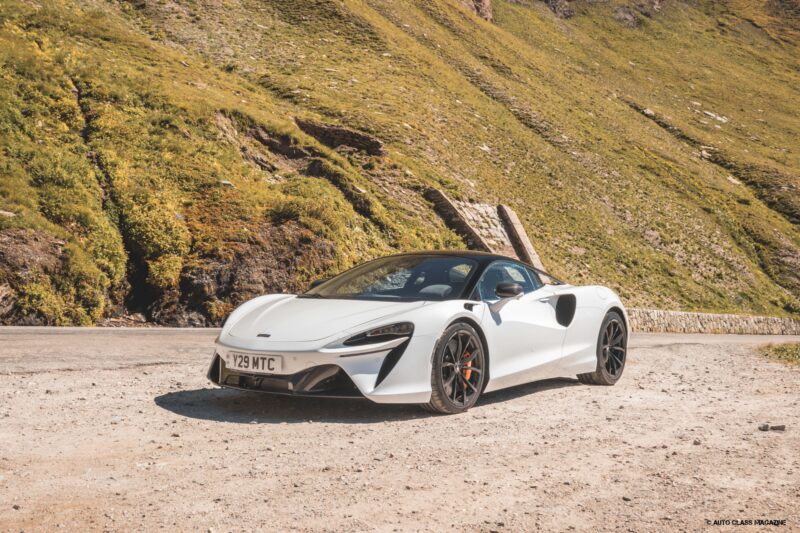
Another year has passed – a month more, a month less – and the Alps Attack appointment is knocking on the door as the ideal way to escape from the incessant grip of the heat of this torrid summer. It is an escape to the Alps, a marathon of mountain passes ready to enhance the pleasure of driving and consecrate the cars chosen according to an absolute principle, that of driving involvement. This is why in this case we never particularly paid attention to numbers such as maximum power, torque or peak performance, but rather to the power/weight ratio and factors such as handling and connection with the asphalt. Last year we created a precedent by breaking the rule and tackling the Alps with the over 500 horses of the Stelvio Quadrifoglio. This year we intend to move beyond the bar and we decide to do so in the central weeks of August. Madness, or was it all planned?
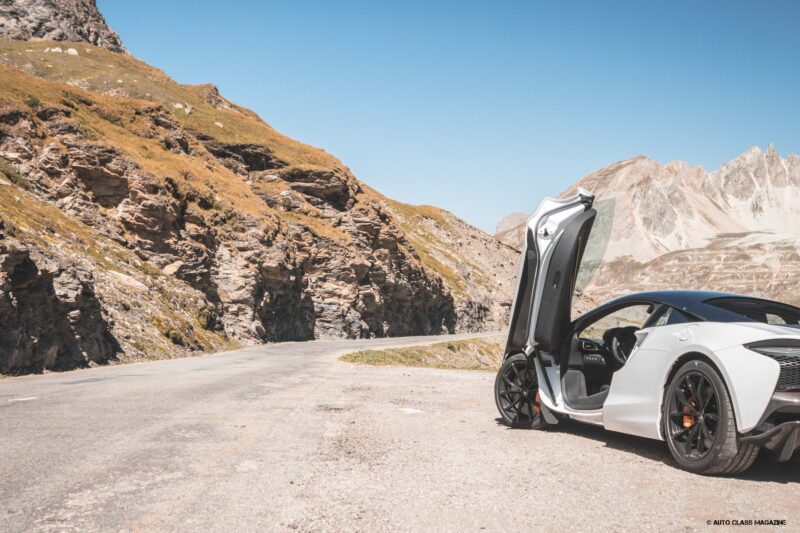
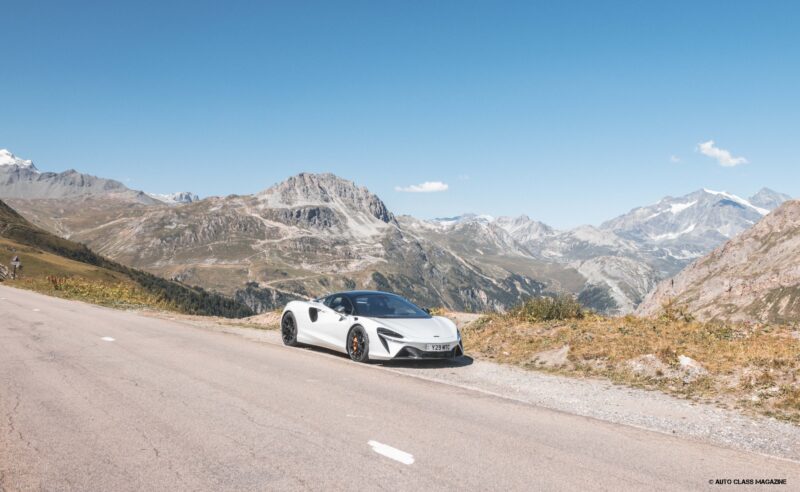
To tell the truth, there are many differences with the usual format, but we won’t be here to reel them off as if it were a tutorial, but rather to talk about the incredible experience brought home after these days behind the wheel with the new born in Woking, the McLaren Artura. A name that is very different from the alphanumeric legacy to which we have been accustomed, winking at the female name used for the splendid Elva, but making it available to a much larger production model, the first Plug-In Hybrid for the note. The Artura, which then stands for the ultimate meeting between Art and Future, it’s entirely new and brings with it a notable amount of innovations, both for its aesthetic and its mechanical side. To fully understand it and to realize whether the proverbial McLaren performance has remained intact or even improved, I decided to throw it among the tortuous hairpin bends of the French Alps, where the smallest dynamic plus is put to the test without half measures. And yes, you can recharge the batteries from a common electrical outlet. To a McLaren! Are you kidding?
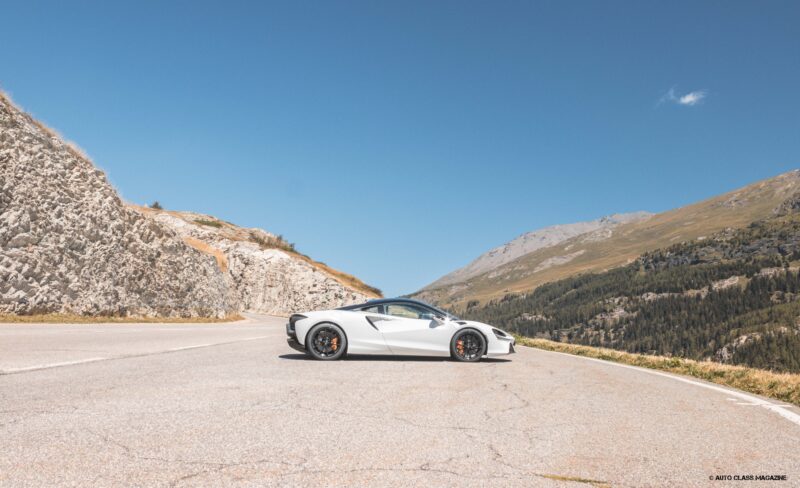
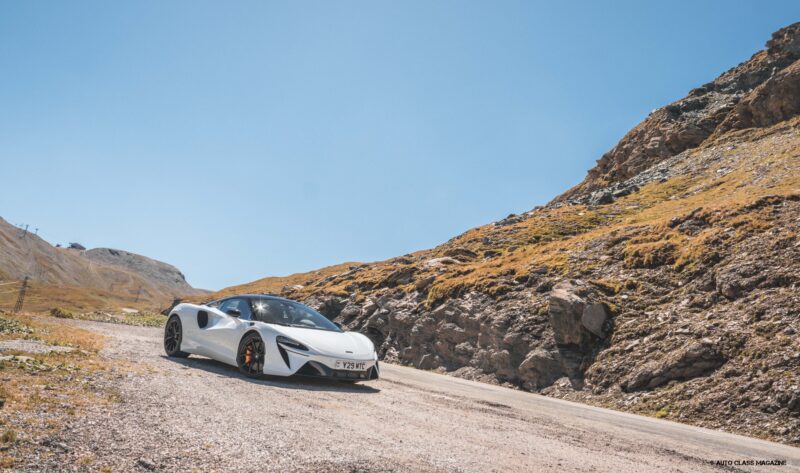
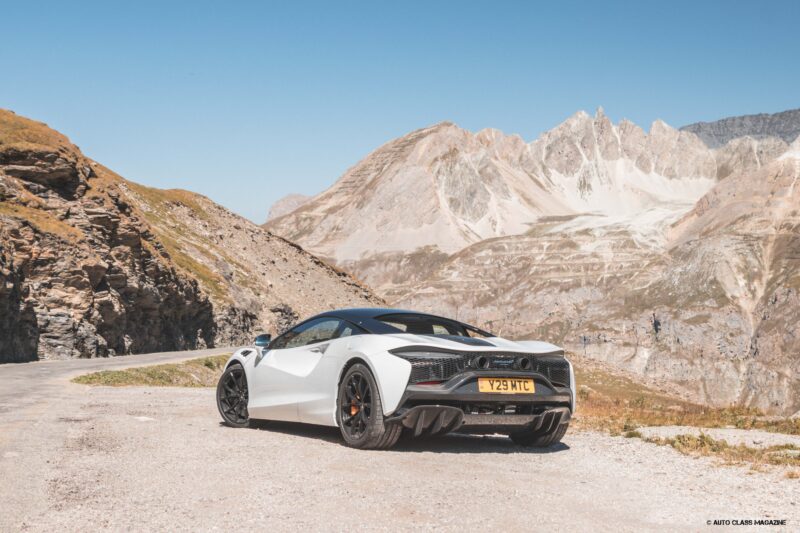
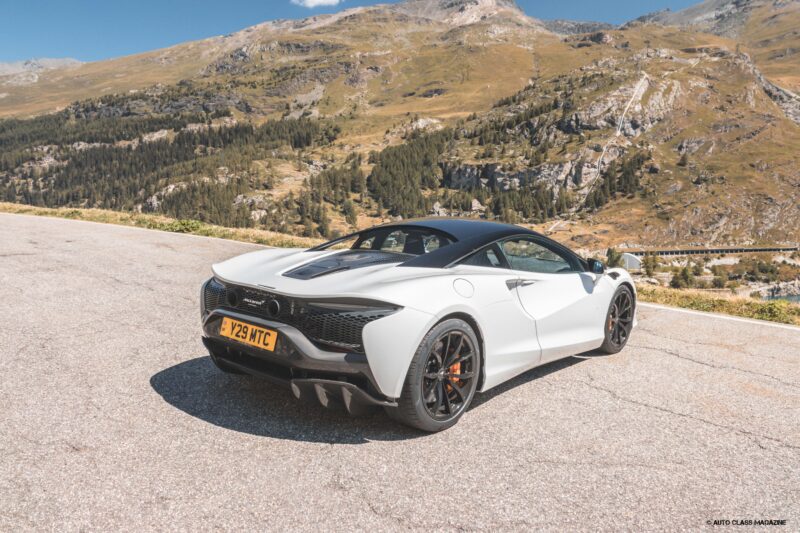
The only way not to curse that red-hot ball called Sun is to get up at the first light of dawn and set off when traffic has not yet invaded the roads that divide us from Turin and its road that leads to the mountains. The Artura benefits from a new platform obviously dedicated to hybrid propulsion. We no longer have a V8, but a lighter and more efficient 3-liter V6 arranged at 120° and with the turbos in the middle rather than outside, combined with a 7.4 kWh electric motor which works in a very particular and different way than usual, for example by completely excluding regeneration during braking, so as not to affect driving purity. In fact, let’s start from the lack of a real reverse gear, a maneuver that can only be implemented in electric mode and guaranteed by a constant reserve that prevents the batteries from running out of charge, then moving on to the way in which the two motors work in perfect harmony, varying the use of electric propulsion depending on the driving mode. With fully charged batteries it is possible to travel up to 30 – or rather 31 – kilometers in 100% electric, while in Comfort the car will optimally manage the dialogue between the two engines. Sport and Track draw more markedly from both, thus making the plus of the 95 horsepower delivered by the electric motor alone always available. The hybrid unit delivers a total maximum power of 680 horsepower and 720 Nm of torque on the rear axle, all through a new 8-speed dual-clutch gearbox.
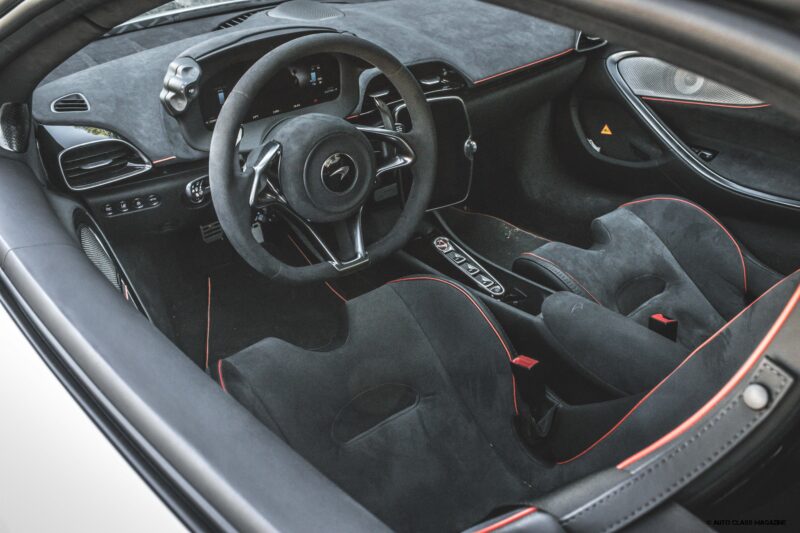
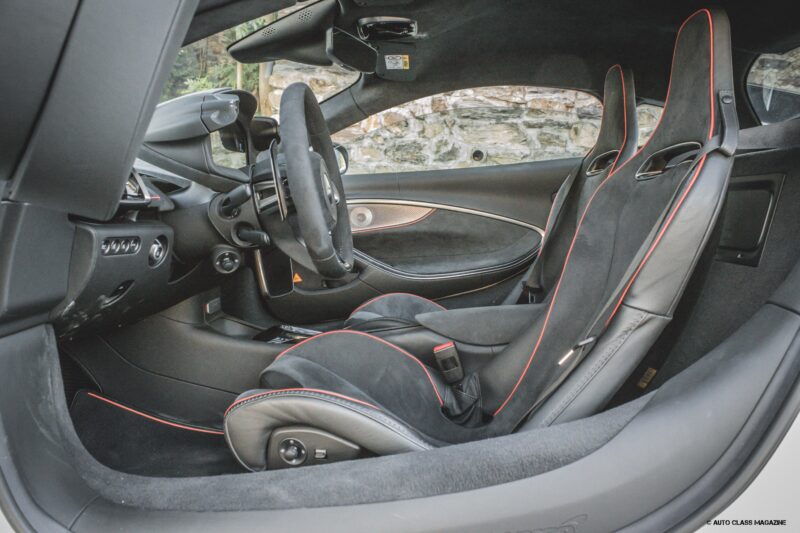
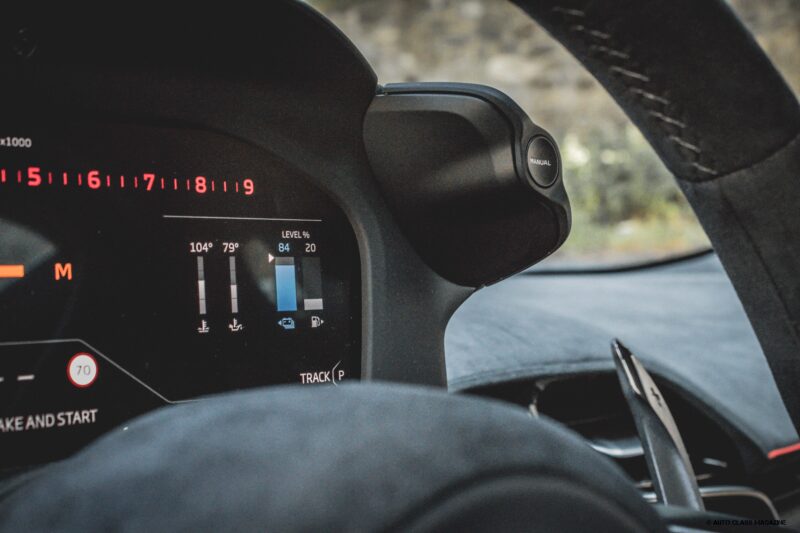
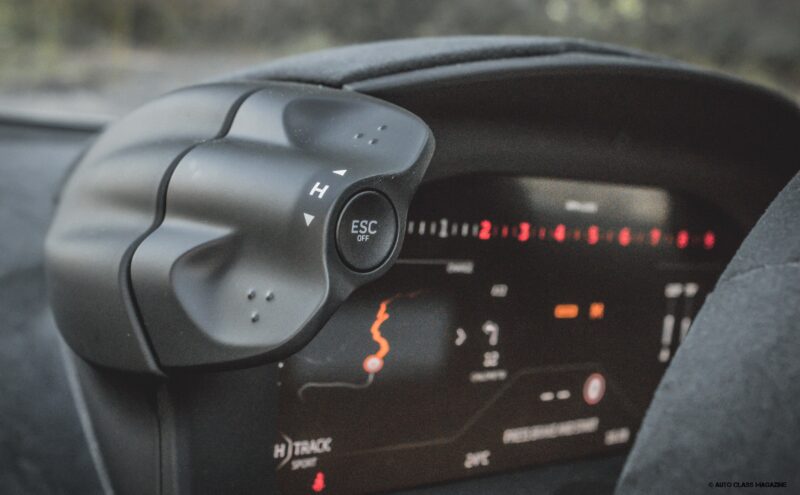
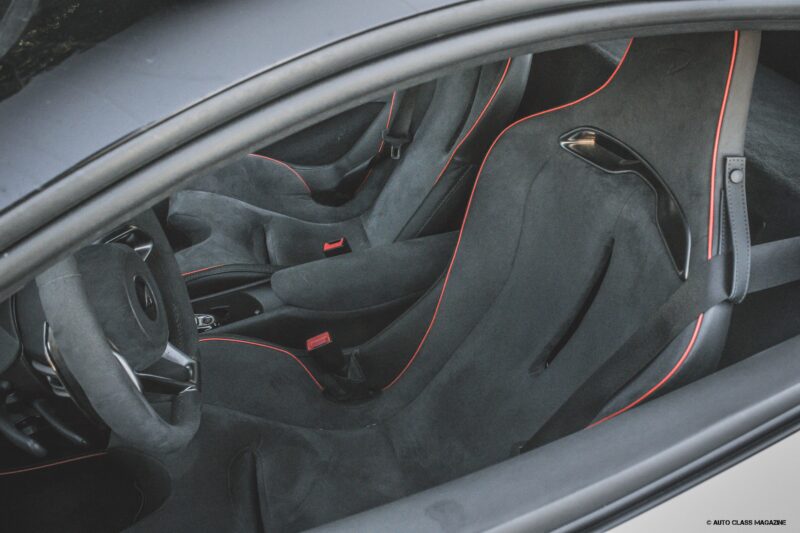
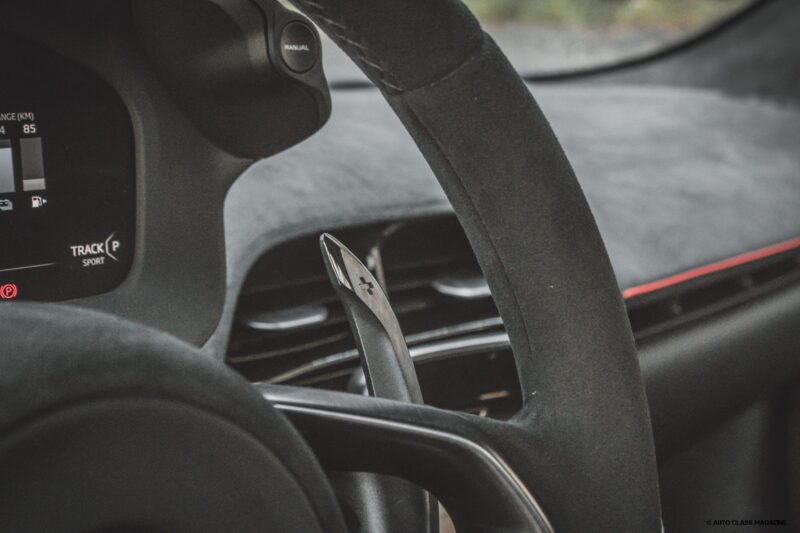
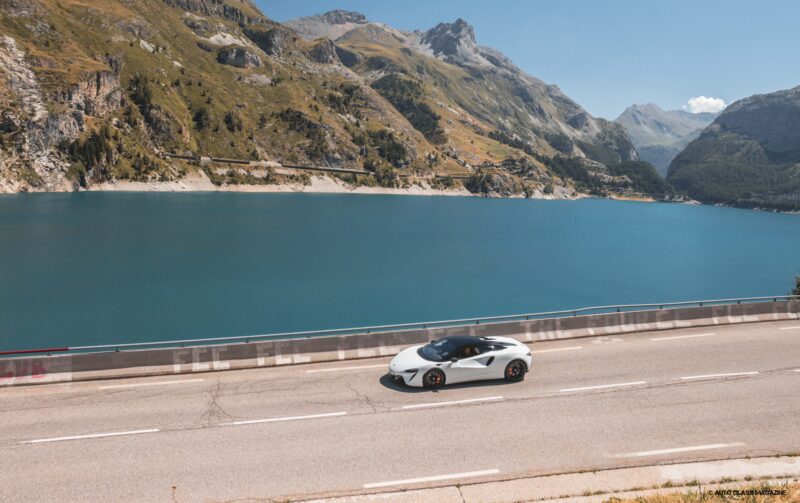
However, at McLaren they thought that the new generation needed an even clearer diversification compared to the exceptional things that have been done up to now and so they revised the cockpit, in particular the area that really matters the most, the one dedicated to the driver. Never before we felt like racing drivers who have left their suit and helmet at home, with a driver-oriented cockpit that integrates the controls to intervene on Handling and Powertrain directly above the digital dashboard, now fixed to the steering wheel and therefore always at the ideal height in front of the eyes of the driver. The paddles then have an exceptional feel, both thanks to the weight itself and for the roughness that allows you to pinch them even with the steering wheel turned. And then there is the steering, the absolute intermediary that elevates the perception of the road and the movements with which you enter through corners. A steering wheel that thank goodness doesn’t even have a single button, exactly as it should be on a car of this kind. The positioning of the button for the lift system is then improved as well – now much more practical – and a new infotainment system has been integrated, now perfectly in step with the times and with customer expectations.
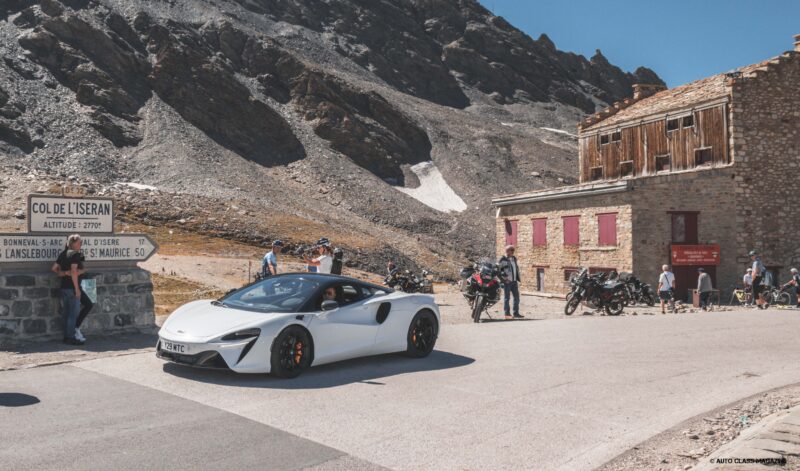
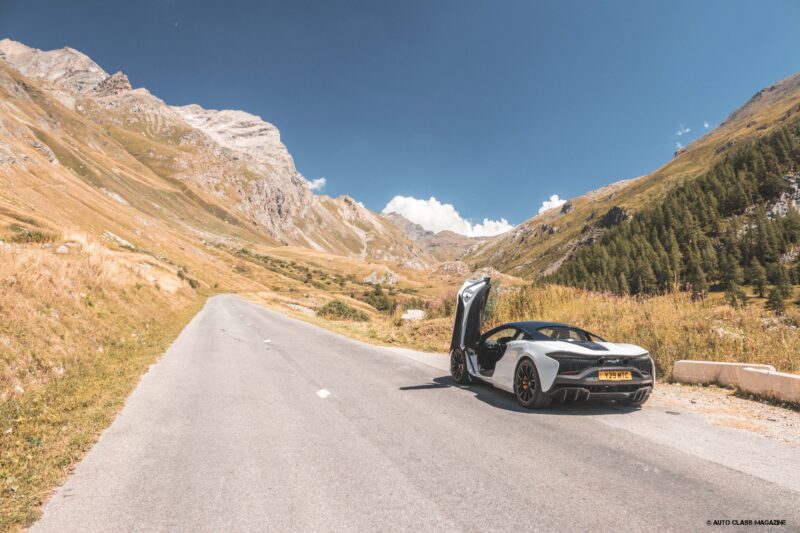
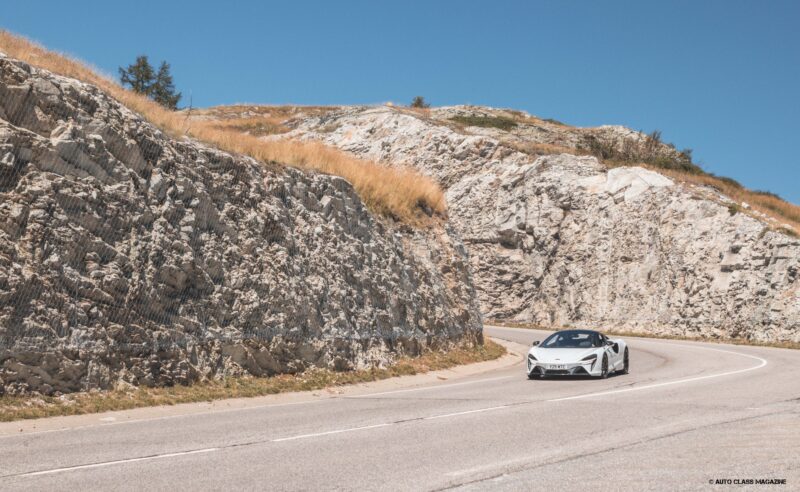
Enough preambles and introductions, also because the motorway section is soon coming to an end and despite the sports seats which nevertheless offer lumbar adjustment and the possibility of sliding forward or reclining, I feel that something is about to change in the air. I won’t deny it, I have practically never used the electric mode all alone, but only for one reason, that is to preserve the maximum charge in order to then exploit it between the curves, when that extra peak of power and reactivity would have accentuated the smile on my face. Another full tank of petrol, proving that hybrid does not mean low fuel consumption (far from it) and I begin the ascent up the Colle del Moncenisio. This year’s Alps Attack differs from previous years for the simple reason that we have not planned a particular route to follow, but rather a selection of different roads designed to enhance the devotion towards the car and road relationship, a combination that can be appreciated as long as all the pieces of the puzzle fit together correctly and that is about to happen.
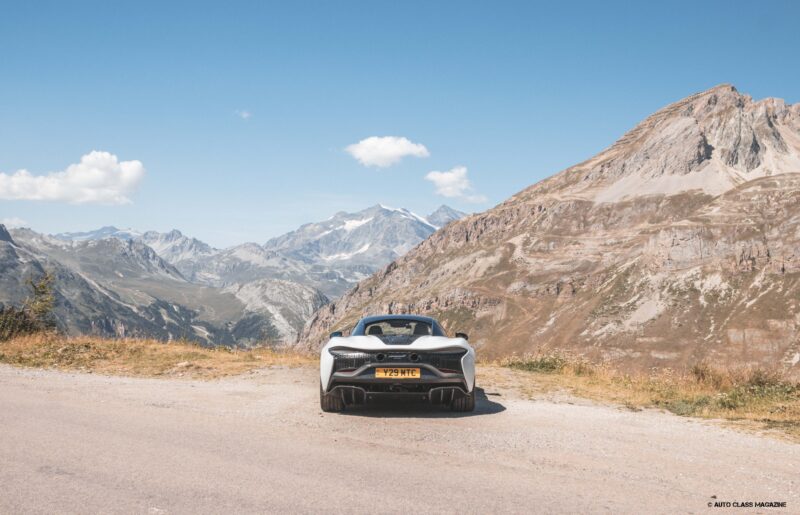
Susa is behind us and with the first rays of the sun making their way above our heads it is time to face the first climb. Fortunately there is no traffic yet, except for the presence of a small bunch of motorcyclists who soon realize the superiority of the Artura’s chassis. It’s incredible how by setting it to Sport, the car transforms from a comfortable grand tourer to a collector of strong emotions. The carbon-ceramic brakes with 390 mm discs at the front and 380 mm at the rear are tireless and when put under stress they never showed the slightest sign of fading. Hybridization has led to a weight increase of just 50 kg compared to the 570S, but this is never perceived, not one bit. I turn to manual mode because although the automatic is incredible and almost seems to read your mind, I’m the only one who knows where I’m going to launch the front end of the Artura and how I intend to come out of corners.
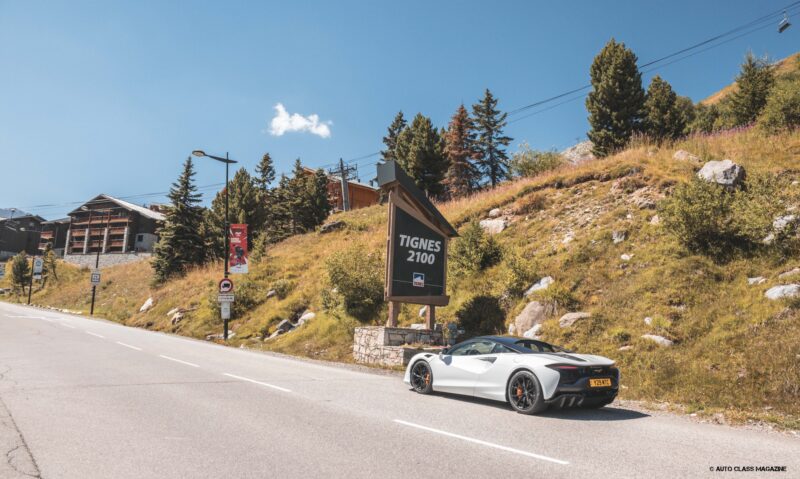
The body always remains close to the ground and the rigidity of the chassis supports an asphalt that betrays the perfect conditions in the valley with some disconnections towards the state border. The sound of the V6 is constantly in the cockpit, as is the breath of the two turbochargers, but in terms of fullness it loses character and decibels as the revs rise. An aspect which, however, is readily forgiven due to the ballistic performances with which we pass from one apex point to the other, with that steering wheel so damned precise that it seems to come from another world, where the perception of control has its own rules, probably unattainable to others. Sure, some might criticize the lack of drama and madness that characterizes its Italian rivals, but McLaren doesn’t care about that. McLaren is in fact synonymous with the exact opposite, it is like a silent sniper you do not see until it’s too late. It’s a fatal blow that comes from who knows how far away, but hits exactly where it’s needed. The Artura, with a name that sounds like that of the third degree aunt you meet just twice a year, is exactly this: a lethal weapon with maximum effectiveness.
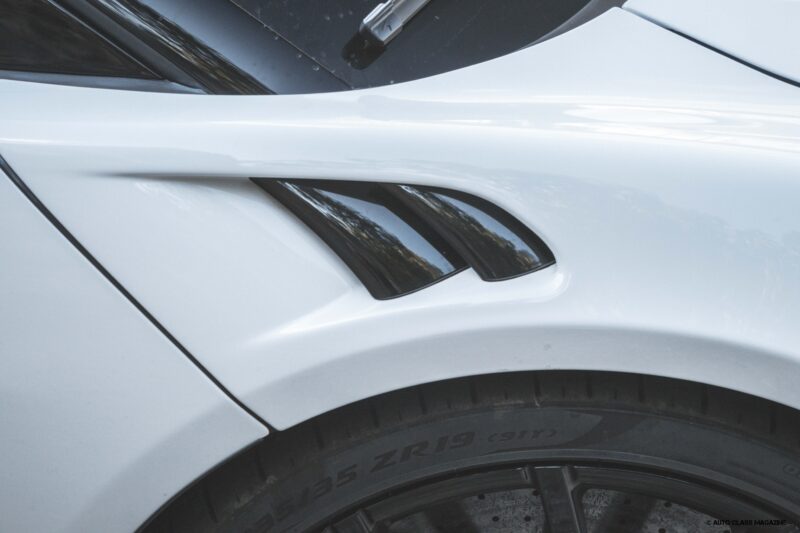
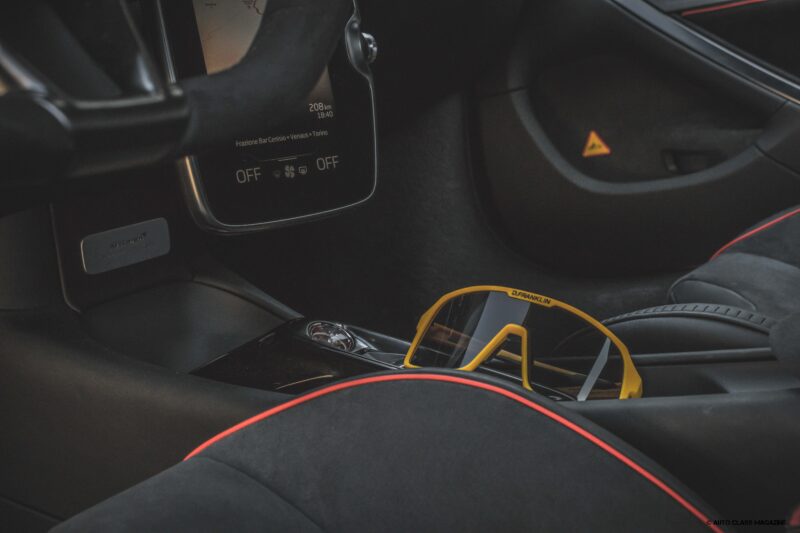
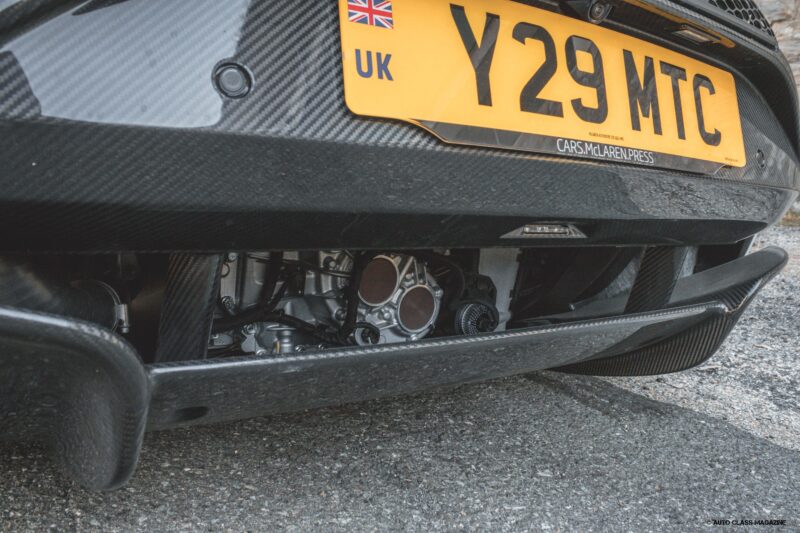
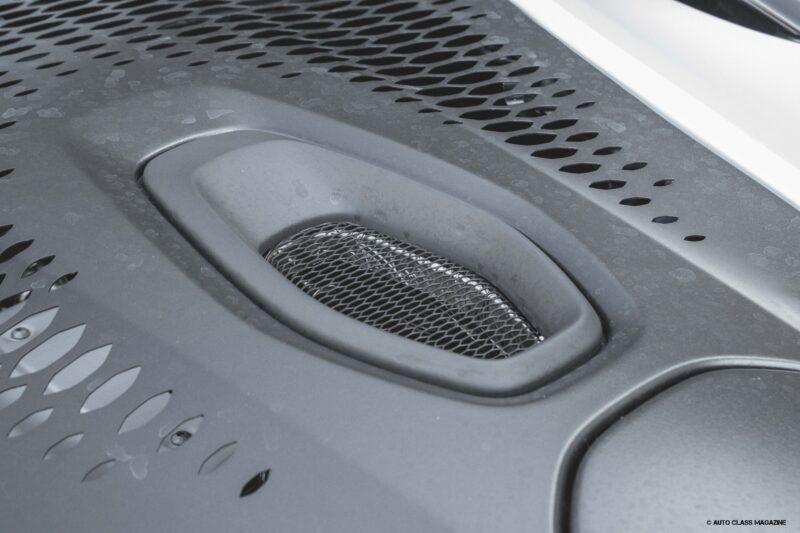

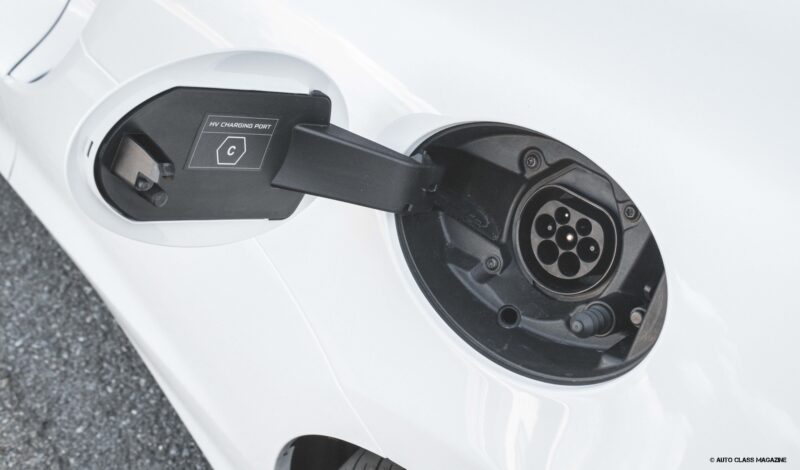
The Silica White spaceship lands on the Moncenisio and continues without stopping amid the amazed looks of people here. While the characteristic cut of the headlights remains at the front, the side area has been transformed, resulting in aerodynamic delight thanks to gigantic curves and air intakes, abandoning the hidden positioning of the door handles. We then find the small slits above the front wheel arch, just like on the LT variants of the previous Sport Series. However, it is at the back that the Artura confirms that you shouldn’t underestimate it for a silly name. With somatic features borrowed from the Elva, we have a double exhaust in a raised central position and a huge carbon fiber diffuser that reveals the gearbox and much of the mechanics positioned in the mid-rear area of the fiber tub that houses the occupants. The engine plays with a see-through effect and lets heat escape from the so-called “chimney”, a piece that is as functional as intriguing. The curves that divide us from Lanslevillard are road art, a stack of wide hairpin bends divided by straight sections that allow you to reach speeds that would require you to have your license revoked for life. The Artura never makes you wonder if accelerating hard to the floor is the right thing, you don’t have time for second thoughts and while the trees on the roadside move indistinctly and you rely on the braking system you feel like you’re on a track, because even through the tighter bends you can turn without ever taking your hands off the ideal position that grips the steering wheel. At the end of the day I realize I had clenched my hands so much that I made small cuts because of the stitchings, imagine what we’re talking about.
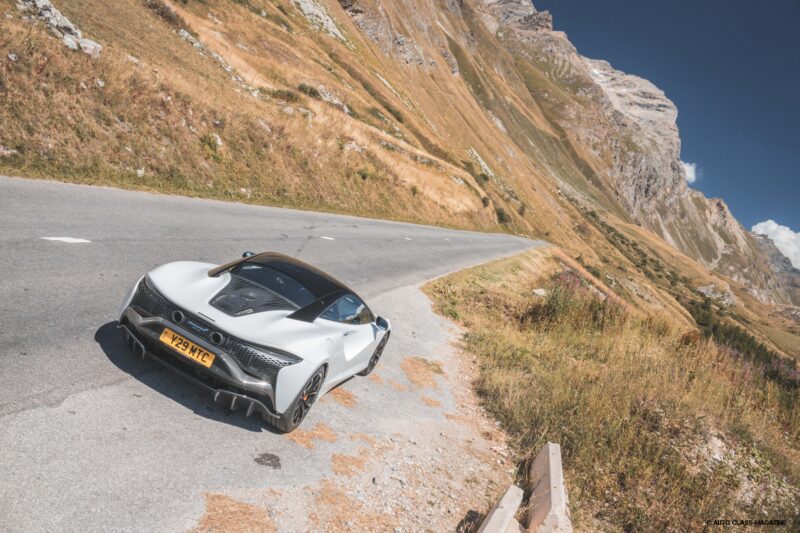
As mentioned, it is an incredible weapon, but precisely for this reason we must realize that if we intend to make the most of the absurd performance reserve of the Artura, we must take into account that comfort will be sacrificed in favor of fun and adrenaline. I slow down as we begin to climb again, along the soft curves of the Col de la Madeleine, just before arriving in the heart of the day, on the crest of an Alpine giant that I haven’t tackled for some time and which is exactly as I remembered it: the Col de l’Iseran. The road becomes narrower and I am necessarily forced to slow down. There is room for some challenges to the laws of physics, especially in the points with greater visibility and just before the most panoramic part, which steals the show from the emotions offered by that trembling of arms and legs that pervades your body when you speed a very few centimeters from the precipice. Even at low speeds, one of the most beautiful actions is noticing how moving the steering wheel by just one millimeter corresponds to a precise change of the directional angle.
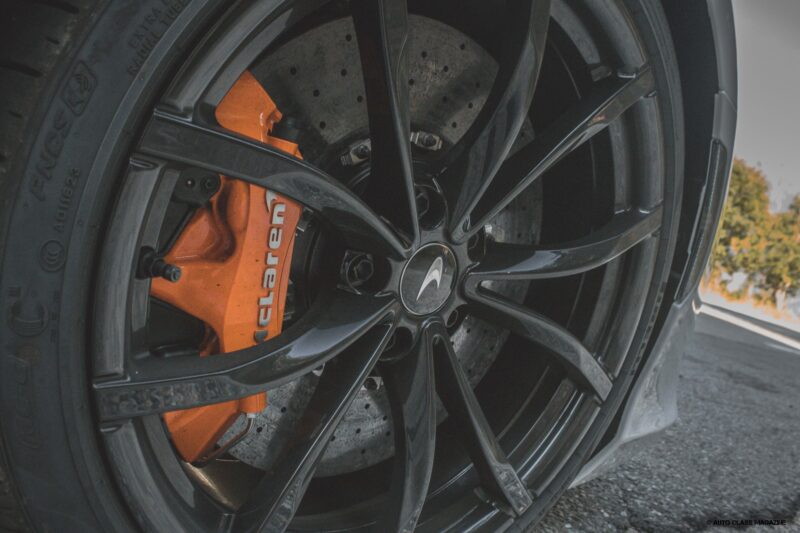
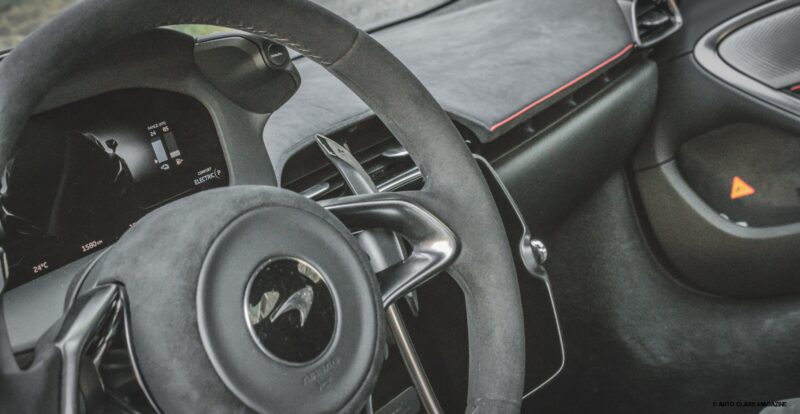
The sun is shining in the sky, but the air is finally fresh. I roll down the window and enjoy a few kilometers with my arm dangling on the door, almost playing with the asphalt that flows under the dedicated Pirelli tires always ready to offer maximum grip and reduce rolling noise in the passenger compartment. In this situation I would have preferred a softer tire that warmed up more quickly, not caring about accessory values, but I imagine that not all the Artura customers will spend their days attacking Alpine passes. Having reached an altitude of 2,764 meters, I pull up next to the sign that confirms the conquest of the summit of the highest automobile road in Europe, I turn off the engine and let the car enjoy a few moments of well-deserved rest. The wow factor is emphasized by the butterfly wing opening of the doors, a scenographic effect that does not penalize the ease of access and descent into the passenger compartment, not even having to substantially climb over the side profile of the carbon tub in which we are sitting. In terms of practicality, we have a large cockpit at the front and the possibility of placing two backpacks right behind the seats, in a slightly raised position.
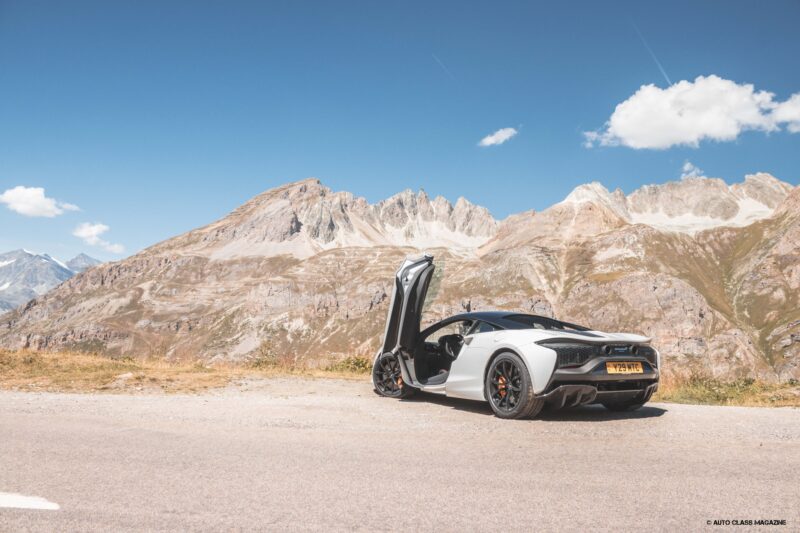
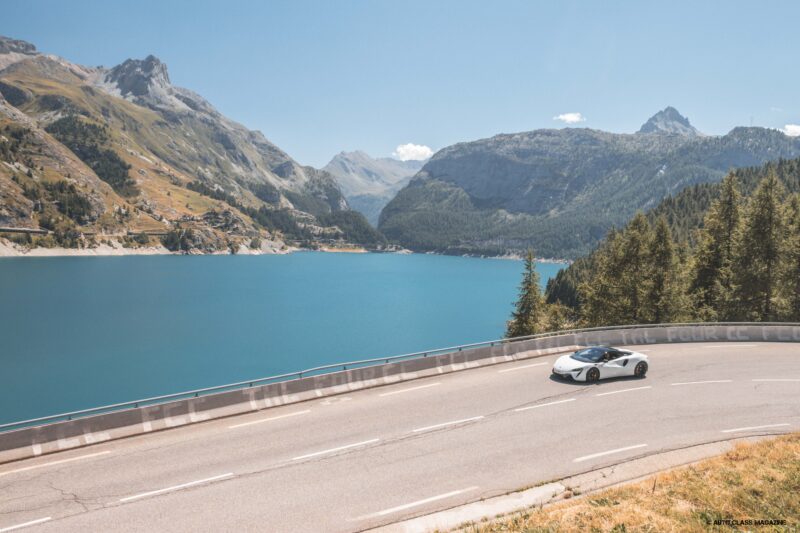
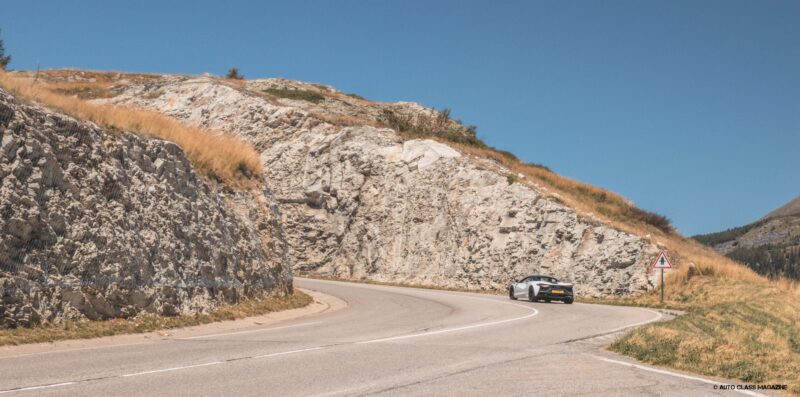
The area begins to crowd with tourists, as the majority of people appear incredulous at the fact that the Artura is hybrid and can move in electric mode. The next moment I bring the V6 to life and sweep away any doubts about the true nature of this or any other McLaren. A quick tap on the Handling and Powertrain selectors and I leave the top of the Iseran behind, pointing the nose of the Artura towards Val d’Isère, one of the most renowned tourist resorts in the area. I take advantage of the northern side of the pass for a more relaxed pace, noticing how even in Auto mode, the gearbox always knows how to entrust me with the ideal gear. Visibility is perfect on every front and side corner and the wheel arches continue to indicate the position of the front wheels, a magic that few other brands can boast. I cross the town and while everyone turns to observe a €236,000 supercar where you would least expect it, they take photos and play guessing which models it might be. – No ma’am, it’s not a Lamborghini. This is better. – We could waste hours, days, months or an entire lifetime arguing about what is better or worse for each of us, but what is undeniable is the objective value of a driving experience tailored to the driver. The concept of performance that McLaren insinuates into each of its models is in fact the declination of a vision born in the world of racing and translated onto models suitable for road use and which give their best in any circumstance. The lack of conspicuous aerodynamic appendages should not be misleading, because the more you increase the pace, the more you realize that the Artura is literally glued to the ground. I take the fastest curves as I’d do on a racing track and as we start to rise again towards Tignes, taking advantage of the width of the road and the absence of traffic, you realize that the boost granted by the small electric engine intervenes in the way and for the time necessary to have a reactivity equal to that of a supercar with a twice as generous internal combustion engines.
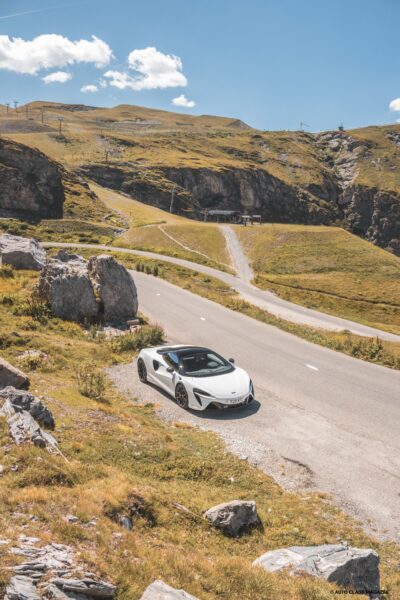
You get carried away and it is precisely the apparent simplicity with which you reach speed and cornering of pure craziness that must sound like a warning and not make you forget that we are dealing with a rear-wheel drive missile which, after all, does not disdain widening its tail a bit, especially in Track mode and with traction control disabled. The Pirellis do everything they can, but the power is huge: the choice is yours. You would never stop driving and although the declared consumption may make you think of forgetting the road to the petrol station, bear in mind that asking a lot to the Artura means emptying the petrol reserves of half the planet. What is certain is that it will be worth it. Holding this steering wheel gives you an unparalleled sense of completeness, partly because McLaren (still) is the least obvious choice, but also because you establish a real relationship of intimacy with a chassis with otherworldly skills, capable of gripping the asphalt through corners and to take off when you have enough guts to press the throttle to the floor. We have achieved powers that are difficult to exploit on the road, but we are in that time gap in which we have opened up a world – the hybrid one – in which we can still tap into the passion of thoroughbred motorists who do not intend to abandon the combustion engine and at the same time exploit extra power injection. The same power that presses you to the seat as you attack a mountain pass without compromises, aware that there is less and less sand in the hourglass.
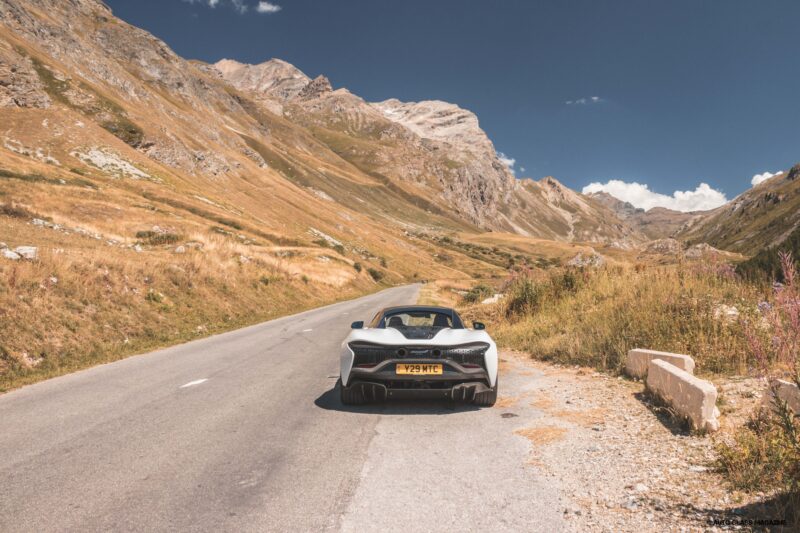
The Alps Attack has always been a way to celebrate mountain roads. Not this time, at least not in the most classic way, given that Artura managed to steal the show and soon become the undisputed protagonist of our climb. If last year we have already disobeyed the rule of less power = more fun, this year we exaggerated and probably reached the very limit. From here it is only possible to take a different crossroads and let the Alps take over the scene, but not today. Today, eyes and head are only for this McLaren which gives life to a new era and does so without any apparent flaw, without making compromises and showing how a hybrid propulsion makes sense when it comes to increase driving fun thanks to performance that are even better precisely for its electric box. We don’t care about traveling silently without being noticed or leaving the garage without waking the neighbors. Not with a McLaren. We are interested in the fact that such emotions continue to fill the lives of enthusiasts, because as long as we have cars like these, there is hope that the automotive world remain something beautiful.
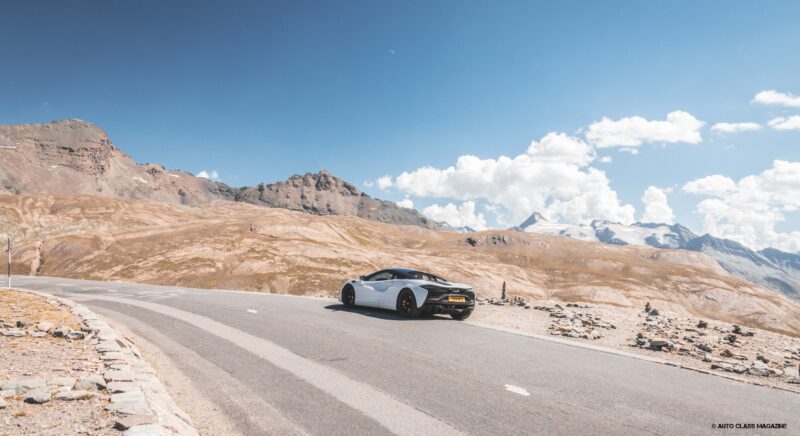
MCLAREN ARTURA
Engine V6 cylinder Twin-Turbo Plug-In Hybrid, 2.993 cc Power 680 hp Torque 720 Nm
Traction Rear Wheel Drive Transmission 8-Speed Automatic Gearbox Weight 1.498 kg
0-100 kph 3,0 sec Top Speed 330 kph Price from€236.000

